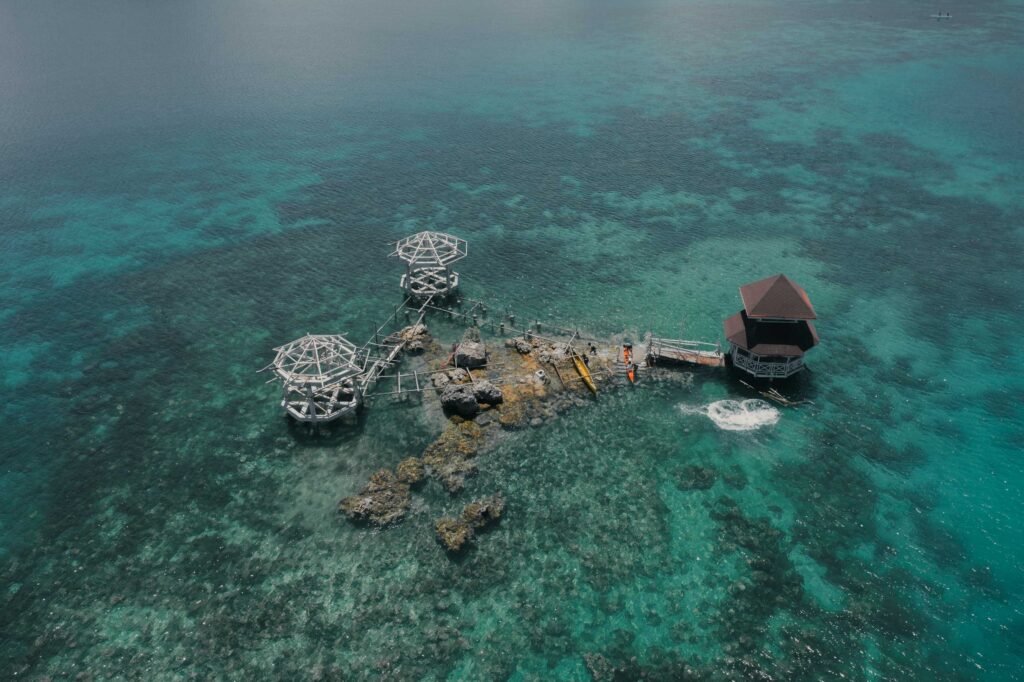For a very long time, the massive, unexplored depths of the Earth’s seas have captivated and mystified people. Exploring Deep Offshore Technology Challenges and Innovations vital resources that humans can now access because to advances in technology in deep offshore drilling. Multiple industries and the environment are touched upon as the article delves into the varied realm of deep offshore technology, including its evolution, uses, and consequences.
What is Deep Offshore Technology?
Deep offshore technology is a collection of high tech engineering methods, instruments, and systems used to learn, extract, and control resources located at great depths beneath the water’s surface. Marine engineering and energy exploration rely on it heavily, especially for the extraction of oil and gas. Robots, automation systems, and undersea equipment are all part of this technology, which is used to work in the challenging and frequently dangerous conditions of the depths of the ocean.
How Has Deep Offshore Technology Evolved Over the Years?
The past of deep offshore technology shows how creative and tough people can be. In the beginning, most of the work was done in shallow water, but as shallow supplies ran out, the industry had to look deeper. Important turning points in its history include:
- 1960s-1970s: Fixed platforms and basic subsea systems.
1980s: Introduction of remotely controlled vehicles (ROVs) for underwater operations and floating industrial systems. - 1990s: Developments in drilling technique and subsea production systems.
- 2000s-Present: integration of digital technologies, artificial intelligence, and automation producing safer and more effective operations.
Why is Deep Offshore Technology Important for Energy Exploration?
Exploring Deep Offshore Technology Challenges and Innovations is essential for reaching unexplored quantities of natural gas and oil as world energy consumption keeps rising. It helps to explore hitherto unreachable places, therefore lowering the demand on onshore resources and raising the possibility of fresh discoveries. The value of this technology resides not only in its capability to prolong the life of current fields but also in its capacity to find new ones, therefore supporting energy security worldwide.
What Are the Key Components of Deep Offshore Technology?
Deep offshore technology constitutes a sophisticated set of components engineered to operate under severe underwater circumstances. These encompass:
- Subsea Production Systems: These systems, consisting of wellheads, manifolds, and flowlines, transfer of hydrocarbons from the bottom to the surface.
- Floating Production Platforms: FPSOs facilitate adaptable and effective resource management.
- Remotely Operated Vehicles (ROVs): Unmanned underwater robots maintain, examine, and fix damaging circumstances.
- Advanced Drilling Technologies: Submarine completions and extended-reach drilling help to increase offshore drilling efficiency and safety.
How Does Deep Offshore Technology Impact Environmental Sustainability?
Deep offshore technology presents environmental problems even if it has great economic advantages. Careful management of habitat disturbance, pollution, and oil spills is required. Technological developments are answering these issues by:
- Enhanced Monitoring Systems: Collecting and analyzing data in real time reduces the damage to the environment by giving early signs and predictive insights.
- Green Technology Integration: The carbon footprint of offshore activities is being cut down with technologies like subsea electrification and carbon capture.
What Role Does Deep Offshore Technology Play in the Oil and Gas Industry?
Future oil and gas depend on deep offshore technology. It guarantees a continuous supply of energy by helping to locate new fields and optimises the recovery from already existing ones. Offshore drilling’s viability as a vital part of the global energy mix is extended by allowing operations at deeper levels and pressures.
What are the Latest Innovations in Deep Offshore Technology?
Modern developments in deep offshore technologies highlight the creative character of the area:
- AI and Machine Learning: These technologies improve drilling, decision making, and equipment maintenance.
- Subsea Compression Systems: These systems increase extracted resource pressure to improve production efficiency and field life.
- Autonomous Underwater Vehicles (AUVs): Traditional techniques of exploration and data collecting are less precise and efficient than AUVs.
How is Safety Ensured in Deep Offshore Technology?
Safety remains a paramount concern in deep offshore operations.The latest technology and strict safety regulations assure safe operations.:
- Real Time Monitoring: Continuous operations monitoring allows fast response to abnormalities and dangers.
- Robust Contingency Plans: Deepwater extraction carries hazards, which are reduced by comprehensive emergency response procedures.
- Innovative Safety Gear: Modern materials and designs offer equipment and people great protection.
What are the Key Challenges Facing Deep Offshore Technology Today?
Despite its advancements, deep offshore technology faces several challenges:
- Operational Complexity: The intricate nature of Deepwater operations demands specialized skills and knowledge.
- Environmental Risks: The possibility of ecological damage calls for careful control and creative application of mitigating solutions.
- Economic Viability: High expenses and changing energy prices can affect projects of investment and development.
How Does Deep Offshore Technology Address Harsh Underwater Conditions?
The capacity to resist difficult underwater circumstances determines the success of deep offshore projects. Important tactics are:
- Advanced Materials: Using alloys and composites resistant to corrosion will help one withstand high pressures and temperatures.
- Dynamic Positioning Systems: These methods guarantee stability and accuracy of floating platforms under choppy waves.
- Pressure Control Technologies: Essential for preserving integrity and stopping blowouts.
What is the Economic Impact of Deep Offshore Technology?
Exploring Deep Offshore Technology Challenges and Innovations creates jobs, draws investments, and promotes technical innovation, therefore benefiting world economy. It is especially important in the economic stability of the energy sector and helps auxiliary businesses as manufacturing and shipbuilding.
How Does Deep Offshore Technology Affect Marine Ecosystems?
Deep offshore technologies interact in a complicated manner with marine ecosystems. Although the actions of extraction can disturb habitats, prudent behaviour and technology try to reduce these consequences. Balancing resource use with ecological protection depends on environmental evaluations and stakeholder cooperation.
How Are AI and Automation Used in Deep Offshore Technology?
By improving productivity, safety, and decision-making, artificial intelligence and automation are changing deep offshore operations:
- Predictive Maintenance: By forecasting equipment breakdowns, AI systems help to lower downtime and maintenance expenses.
- Automated Drilling Platforms: Automation and robotics help to simplify drilling operations, therefore enhancing accuracy and lowering human error.
- Data Analytics: Actionable insights from AI-driven analytics help to maximize resource management and manufacturing.
Who are the Leading Companies in Deep Offshore Technology?
Several key players drive innovation and excellence in the field of deep offshore technology:
- Equinox: Pioneered subsea electrification and renewable integration.
- Shell: Operates the Prelude FLNG, exhibiting cutting edge LNG technology.
- Schlumberger: Advanced drilling and offshore solutions leader.
What Does the Future Hold for Deep Offshore Technology?
With sustainability, automation, and efficiency improvements, deep offshore technologies will thrive. Stakeholder engagement, renewable energy integration, and environmental footprint reduction are emerging topics. The sector can overcome problems and secure a bright future by using cutting-edge technologies.
Conclusion
In the realm of ocean exploration and resource management, deep offshore technology is leading the way. It has the potential to transform industry and communities by tapping into massive energy reserves and fuelling economic growth. Addressing environmental concerns and maintaining sustainable practices is essential to its success, though. Deep offshore technology is already an integral part of the world’s energy surroundings, and it’s going to get more so as the industry grows further.


